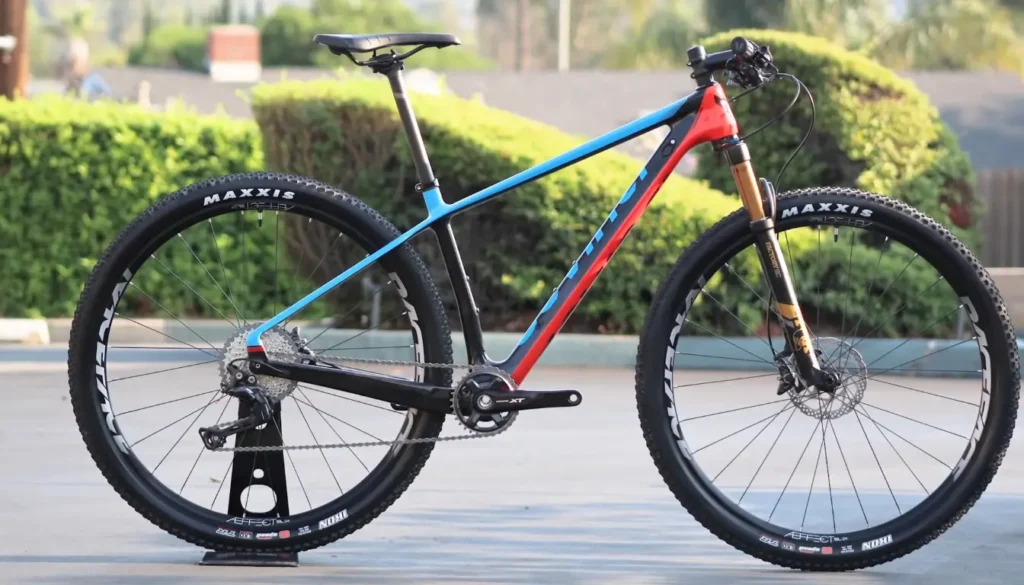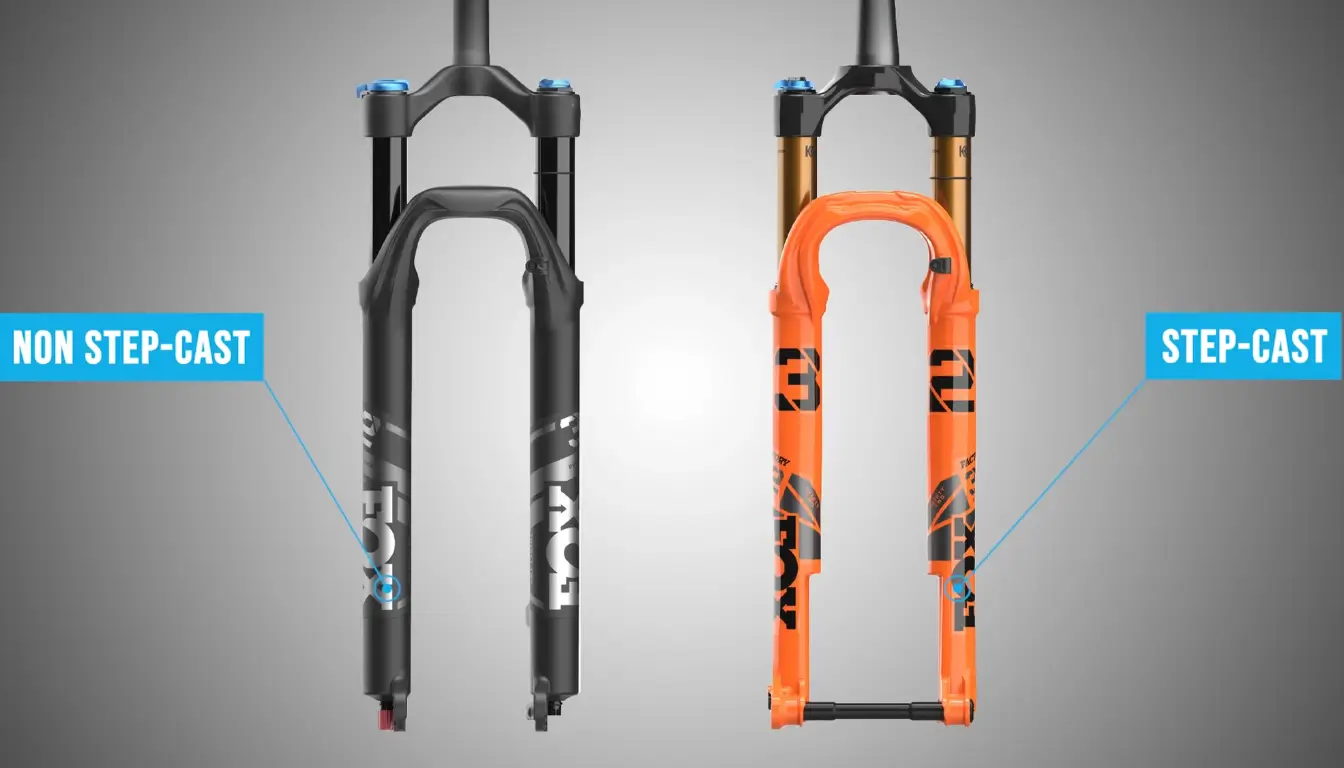Mountain bikes have become incredibly popular over the past decade. They’ve grown in popularity because they offer riders more control when riding downhill.
When mountain biking, you need to be able to steer effectively while maintaining traction on uneven terrain. Mountain bike forks help achieve these goals by allowing you to adjust the angle at which the front wheel contacts the ground.
Mountain bike forks come in two basic styles: single crown and dual crown. These forks give you greater flexibility when adjusting the angle of your front wheel.
What does a fork do on a mountain bike?
Forks on mountain bikes are equipped with a shock absorber—a spring and a damper—that allows the bike to ride over uneven terrain with minimal impact.
Spring
Spring resistance allows the bicycle’s suspension to rise and then quickly return to its original position after riding over a bump. In this case, a coil spring or an air spring is used. Coils are similar to springs in clicky pens but larger and heavier.
Coils, whether made of steel or titanium, add a pound to the weight of the bike and are less versatile than air springs. However, they have improved handling on more robust downhill mountain bikes and provide a more stable, responsive, and subtle ride.
While an air spring is more expensive than a coil, it is also cheaper and more flexible. Shock pumps allow you to alter the spring’s stiffness by adding or releasing air pressure. A Schrader valve is used to regulate the flow of air in this type of suspension.
You need to know your sag in order to set the correct air pressure. How much your body weight compresses the suspension is measured in terms of sag. Sag should be adjusted to between 15% and 30%, based on the type of mountain bike you have.
Damper
A pricey bike fork that simply contained a spring would be little more than a glorified pogo stick. So, it also includes a damper, which regulates the spring’s stiffness. A spring’s kinetic energy is completely absorbed by the damper, which then releases it as heat.
This is often accomplished with an oil-filled piston, much like the kind used in a car. When compressed, the piston drives oil through an opening, releasing energy.
The suspension shaft compresses more slowly, resulting in improved pedaling, cornering, and braking thanks to the low-speed dampening. The low-speed damping on any mountain bike is fully adjustable.
On rough terrains, such as large landings and bumps, high-speed damping prevents your bike from bottoming out. You either have it permanently installed on your bike, or it isn’t there at all; mountain bikes are notorious for this.
On mountain bikes, rebound damping, which regulates how quickly and how often a suspension decompresses, and position-sensitive damping are also available. To avoid flying over your handlebars after a hard landing, the latter feature allows the bike to decompress more gradually.
What does a bike fork look like?
Fork stanchions, or inner tubes, can be removed from the lowers of a bicycle. A lower arch or brace is used to bring the stanchions closer together. The bike’s fork is attached to the front wheel and frame. The spring typically sits in the left stanchion of the fork, while the damper usually sits in the right stanchion.
The diameter of the stanchion tubes in your fork will determine the level of suspension stiffness. If you apply the same force to two tubes of different diameters, the thinner one will bend more than the wider one, as stated on rei.com. To better absorb the force of high-velocity impacts on rough terrain and jump landings, wider tubes will be heavier and stiffer.
What will happen if my bike fork is broken?
What constitutes “broken” is a matter of definition.
It’s preferable to get a new fork if the one you have has a physical crack in it, and that’s true whether the material is carbon & aluminum, steel, or something else. While it is feasible to repair damaged carbon and weld steel and aluminum, I wouldn’t bother with either. You’ll have to (well, you don’t have to) repaint it by the time you get it back into riding shape. If it were reinforced, I still wouldn’t feel comfortable with it. But of course, I say that. A new or used fork may be cheaper than repairing this one.
Forget that if you think I’m talking about a suspension fork. Those are just too intricate to adequately describe verbally. In addition, there is incredible diversity.
And by “how can you fix the fork,” do you really mean “how can you”? Without intending any disrespect, I will venture to guess that this is not something you can tackle on your own if you are asking such a question. See the experts at your local bike shop. Find someone with knowledge of these matters if you don’t have access to a (reliable) LBS.
Maintaining Your Mountain Bike’s Fork

You may extend the life of your mountain bike by taking it in for professional service once a year or after 100 hours of riding. Unfortunately, scratches on the stanchions will eventually wear down the fork and rip the seals.
The stanchions should also be wiped down after each use. Finally, if you plan on pushing your bike hard, you should invest in a better suspension system. Your bike will survive longer if you follow these guidelines, and you’ll have a more enjoyable time on the trails and in the air.
How does a mountain bike’s rear suspension function?
A hardtail mountain bike has no rear suspension. Some mountain bikes, known as dual-suspension bikes, include suspension on both wheels. There is additional shock absorption from large leaps and obstacles thanks to the rear suspension. The rear shock “keeps tires in contact with the ground, promotes rider control, and lowers rider fatigue,” as stated on rei.com.
The rear suspension of a bicycle is situated between the two triangles of the frame, directly beneath the area where the rider sits. Rear suspensions, like forks, use compressible sliding tubes sprung by air or coils.
Conclusion
In the last two decades, mountain biking has gained popularity. It lets people discover beautiful areas, breathe fresh air, and challenge themselves physically. Unfortunately, high-end mountain bikes aren’t cheap, so buying one won’t happen quickly. Saving for a great bike can take years.
However, you shouldn’t postpone jumping in. You won’t know if you like riding unless you try.

I am Ryan Ford, a mountain biking enthusiast who loves to explore the outdoors. I also like to go on adventures with friends and anything else that involves being outside. I love my bike because it gets me out of the house and gives me an opportunity to enjoy nature.

